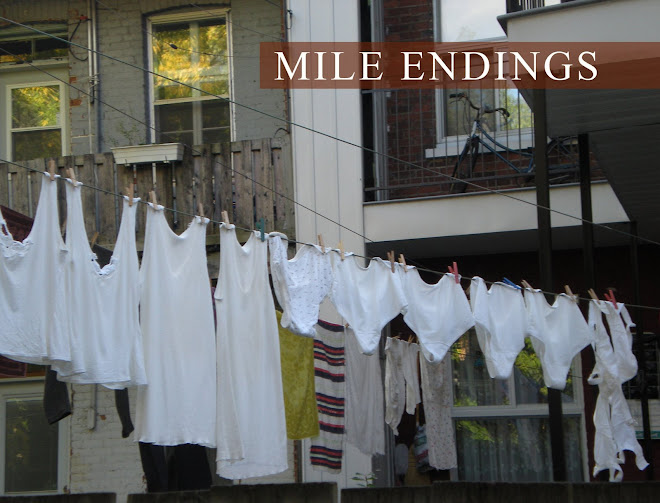On a breezy Saturday morning, across the street from a looming factory building at the corner of Casgrain and Maguire, Diane Boyer gave out cotton gloves and advice .
"When you're an urban gardener you're also an archeologist," she told a small group of people. "You'll find glass, metal, plastic. The soil is compacted. So you take the hoe, remove the top 4-5 centimetres of cedar mulch. Set it aside on a groundsheet," she instructed.
"With a shovel or pitchfork, work the soil. Turn it," Boyer demonstrated. "It's a good opportunity to take out the weeds. We'll add a little chicken manure in there as fertilizer, then we'll put the mulch back on top."
Boyer was leading a workshop on her personal passion: tree square gardening.
Boyer first started planting flowers around the trees by her loft on St. Viateur East three years ago. She won an éco-quartier contest for her initiative. The following summer she took over more tree squares, and then decided to quit her job in film to study horticulture.
She finished her studies this year and started a new job as project manager at the éco-quartier du Plateau Mont-Royal. When she proposed using tree squares as a way to get more citizens gardening, her colleagues liked the idea.
Now Boyer is responsible for a pilot project that's put176 tree squares up for adoption in the eastern, semi-industrial portion of Mile End. In an area notable for its lack of greenery and large garment factory buildings, each tree has a numbered plaque strung around its trunk and instructions for adoption: call éco-quartier.

Residents, schools and daycares jumped at the chance to adopt these patches of dirt.
Plateau Mont-Royal horticultural department supplied the soil, hearty perennials and brightly flowered annuals. Boyer and her éco-quartier colleagues distributed them, along with planting tips, to willing gardeners.
Some people adopted the spots right in front of their homes. Others, like Deborah Kramer and her three-year -old daughter, Luna, have come from five or more blocks away, eager for the chance to garden.
"There are no tree squares on my block," Deborah said. "I saw the signs: 'Tree squares for adoption.' They provide tools, earth, a lesson, and there you go. It's cool. We live in an apartment so it's nice for us. We've adopted this tree. Now we have to take care of it."
Pushing a wheelbarrow of gardening supplies (donated by Rona at Parc and Bernard), Boyer answered questions from new gardeners. "Horticulture is trial and error," she advised. "There's nothing like trying."

"I've always wanted a community garden but the waiting list is four years long. Plus, this is more my speed. I'm a novice," said Deborah.
"One tree square is small but if we all get together we can make a difference and make things cleaner and brighter in the neighbourhood," said Boyer. "A garden is so much better than a piece of garbage."










